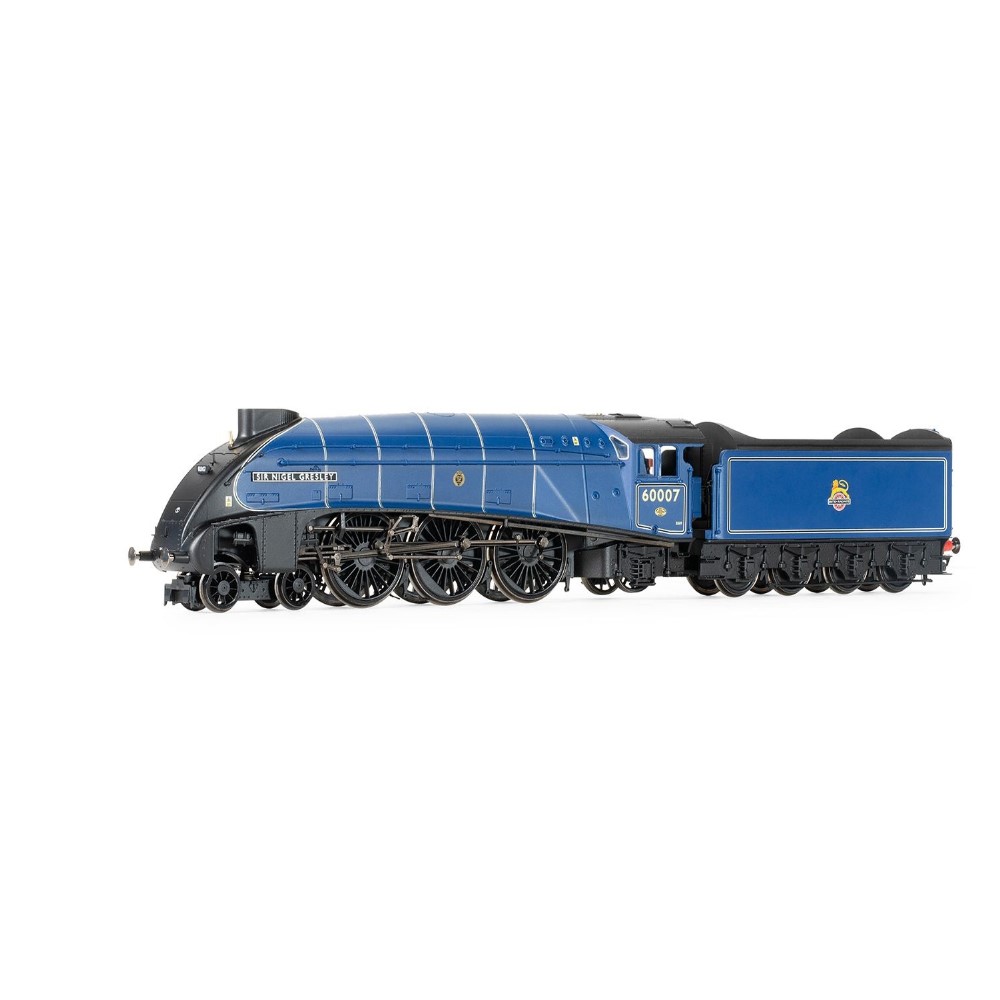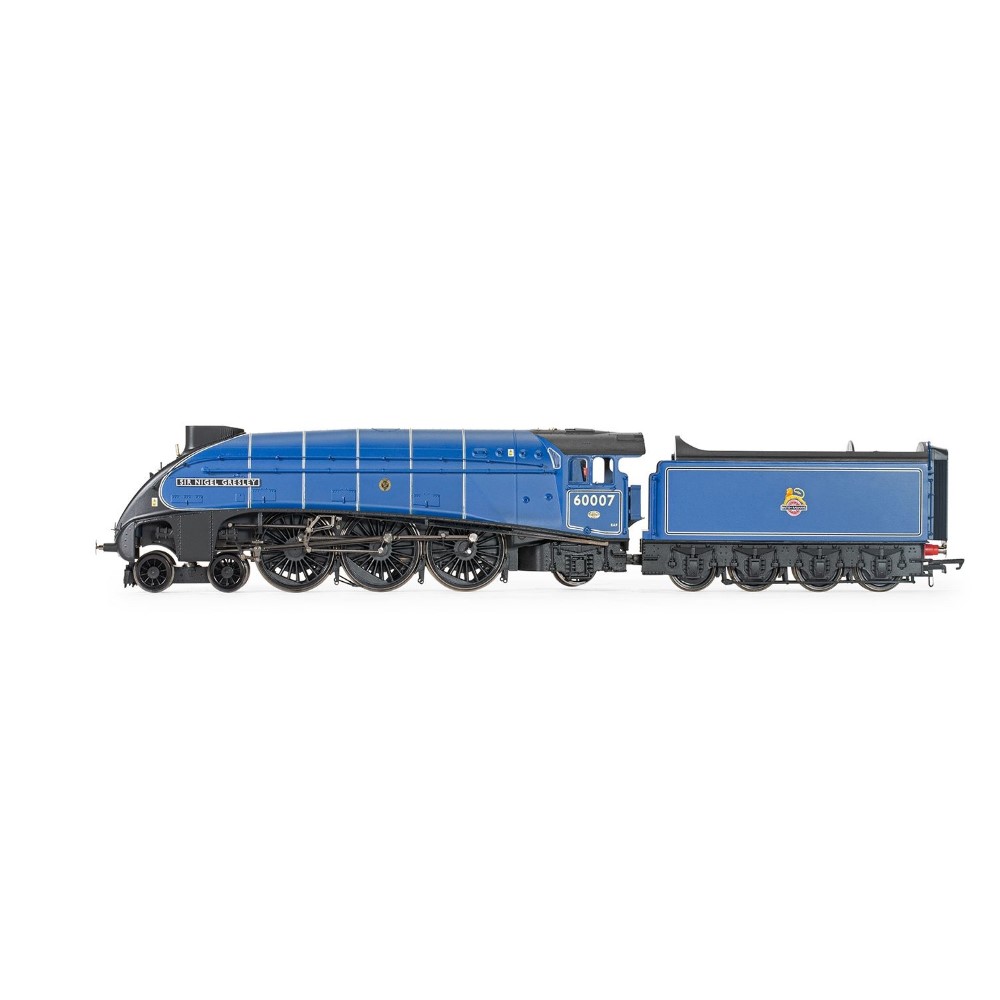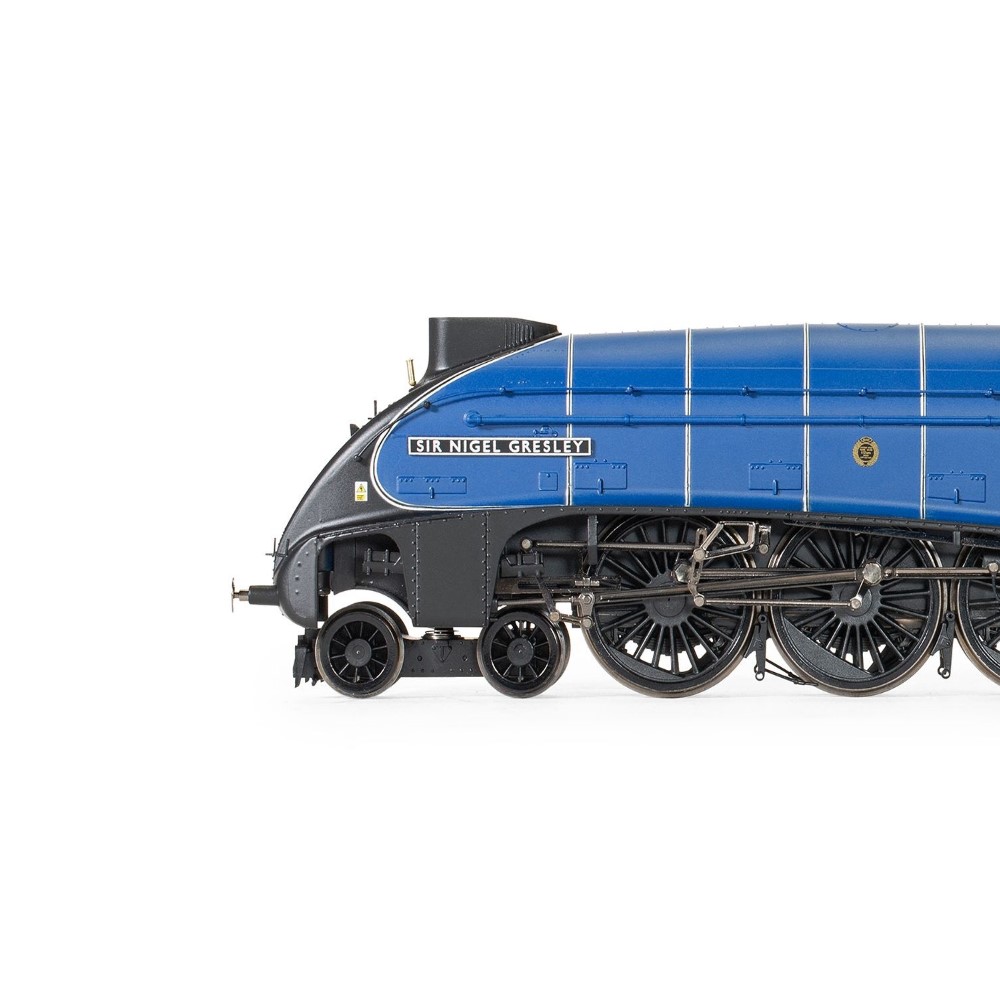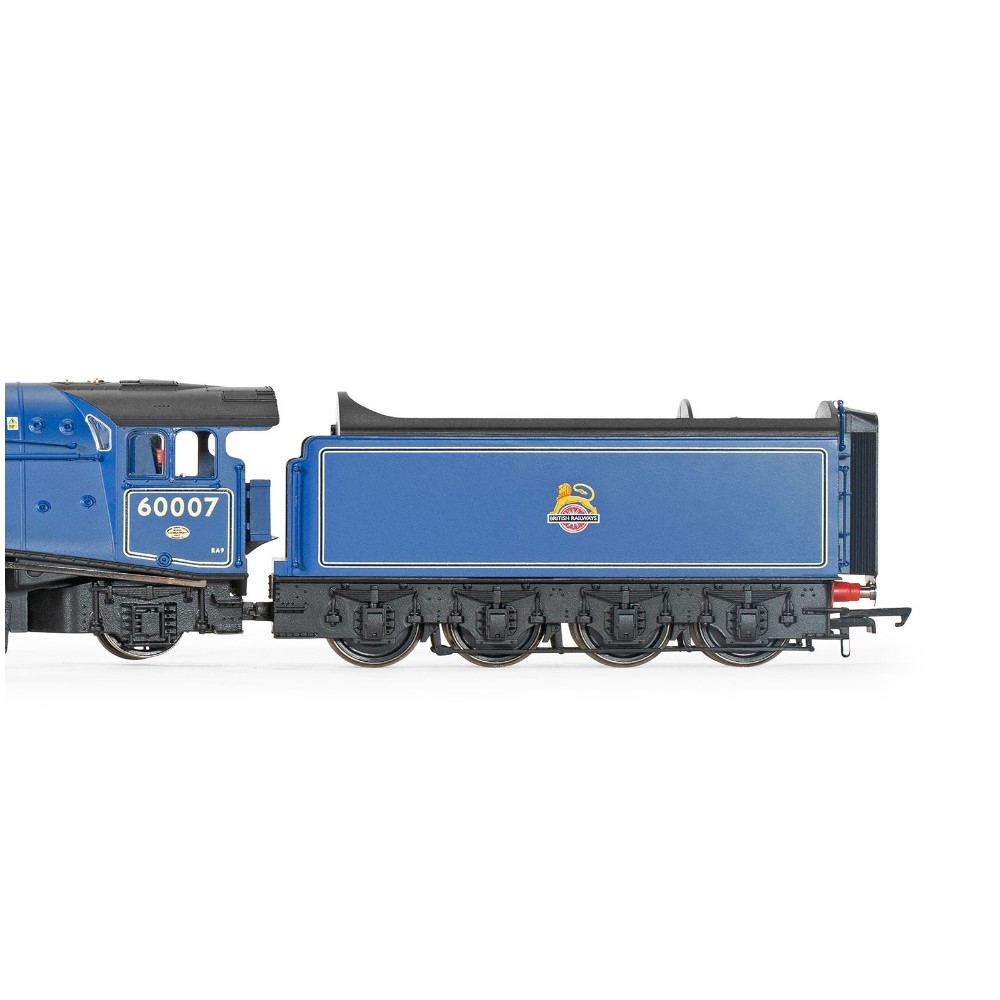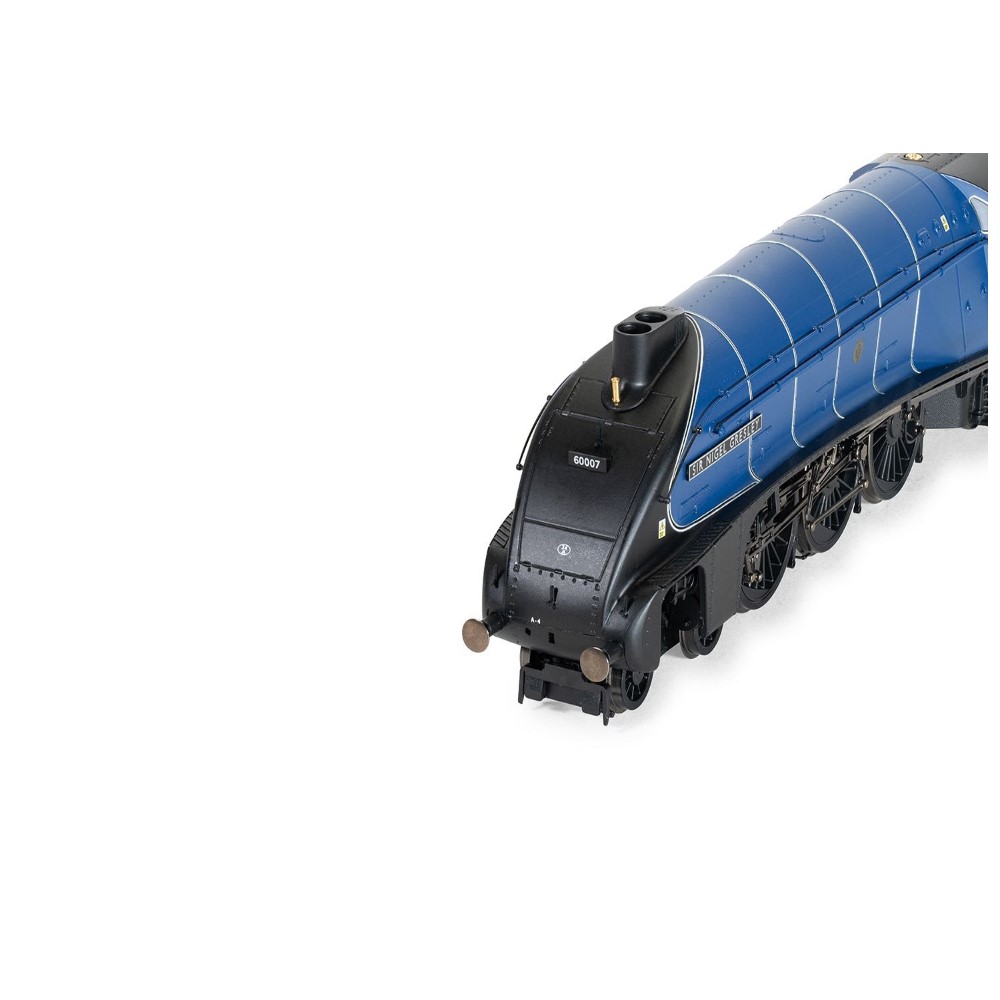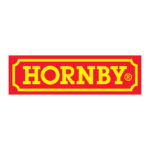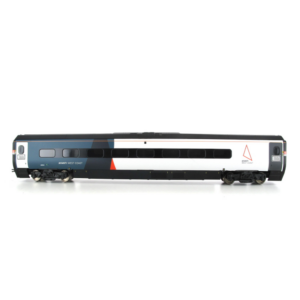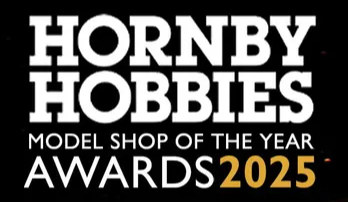You are here:
Hornby R30266 Dublo: BR, Class A4, 4-6-2, 60007 ‘Sir Nigel Gresley’: Great Gathering 10th Anniversary – Era 10
Hornby R30266 Dublo: BR, Class A4, 4-6-2, 60007 ‘Sir Nigel Gresley’: Great Gathering 10th Anniversary – Era 10
Out of stock
Description
Hornby R30266 Dublo: BR, Class A4, 4-6-2, 60007 ‘Sir Nigel Gresley’: Great Gathering 10th Anniversary – Era 10
Product Info
The LNER Gresley A4 is one of the most iconic express locomotives in Great Britain, with its streamlined casing a classic symbol of the attitude towards speed and design in the 1930s, which saw increased competition to the railways from road and air travel. The LNER Board knew that they had to make travel between the major cities faster, comfortable and more reliable.
Nigel Gresley, the LNER’s Chief Mechanical Officer, travelled on the Fliegende Hamburger diesel locomotive in Germany and was impressed by its streamlining, although he realized it was only efficient at high speeds. Gresley was certain that a modified A3 Pacific, with streamlining, could haul greater loads than other locomotives at the same speed or faster and a series of trials were conducted to confirm the A3’s suitability.
With the trials successfully completed, the LNER Board gave Gresley the go-ahead to create the “Silver Jubilee” streamlined trains, the first of the new streamlined A4s.The streamlining of the A4s’ steam circuit, higher boiler pressure and extension of the firebox to create a combustion chamber made them more efficient than the A3 as they consumed less coal and water- especially later on when they were also fitted with a Kylchap double chimney. This improved their free steaming capabilities further.
Their streamlined design not only made them capable of high speeds, but created an up draught of smoke, obscuring the driver’s vision, a major problem on the new Class A4 engines. The story goes that during wind tunnel testing, after several unsuccessful efforts to get the smoke to lift clear, a thumbprint was inadvertently left on the clay model just behind the chimney. This succeeded in clearing the smoke and was incorporated into the final design.
Sir Nigel Gresley was a unique example of the LNER A4 class of locomotive, the only locomotive of the class named after a person on introduction. The locomotive is of course named after the designer of the class and the Chief Mechanical Engineer of the LNER, Sir Nigel Gresley. The locomotive first turned its wheels on the 30th October 1937 as locomotive number 4498.
The locomotive would be withdrawn from BR service as 60007 on the 1st February 1966. Sir Nigel Gresley was saved by the A4 Preservation Society, and has spent much of its preservation career in service hauling tours and visiting preserved railways. In 2022, the locomotive finished an overhaul, and will run on the mainline for much of the next decade.
Hornby Dublo A4 models feature a diecast body, just as their original Hornby Dublo counter parts would have been seen. This is coupled with enchanted decoration which when paired with the diecast of the boiler provides a realistic finish to the body. The models contain a 5 pole motor with flywheel and are DCC ready with an 8 pin socket. These models will also contain a detail bag containing etched nameplates and headboards, allowing the model to be displayed as it would have appeared at the Great Gathering.
What’s Inside
Tech Specs
- Item Length – Without Packaging (cm)
- 29.1
- Item Height – Without Packaging (cm)
- 5
- Item Width – Without Packaging (cm)
- 3.5
- Item Weight – Without Packaging
- 0.6
- Item Scale
- 1:76 Scale 00 Gauge
- License
- Yes
- License line
- Produced under licence for SCMG Enterprises Ltd. © SCMGE. Every purchase supports the museum.
- Finish
- Painted
- Colour
- Blue
- Gauge
- OO
- DCC Status
- DCC Ready 8 pin socket
- Operator
- LNER
- Designer
- Sir Nigel Gresley
- Wheel Configuration
- 4-6-2
- Livery
- BR Blue
- Minimum Curve (mm)
- Radius 2
- Motor
- 5 Pole Skew wound
- Number of Parts
- 1
- Class
- A4 Class
- Buffer Type
- Sprung Metal Buffers
- Coupling Type
- NEM Tension Lock
- Hornby Decoder Compatibility Primary
- HM7000-8TXS: Bluetooth® & DCC Sound Decoder (8-pin)
Additional information
| Weight | 3000 g |
|---|---|
| Brand | Hornby |
| Condition | New |
| Scale | OO/HO Gauge |
| Format | Locomotive |
| Type | Steam |
| Status | DCC Ready |

